¡Chile's offer diversifies!
Published on 15 January 2019
The supply of Chilean products diversifies and allows the economy of the South American country to reduce its vulnerability by depending on different fronts.
Amid the uncertainty regarding the growth of copper exports exposed to the impact of strikes and price variations, the export of agricultural, forestry and aquaculture products from Chile has had an excellent result in recent months. Taking as a reference a listing of the Marco Trade News portal, we selected five products that stood out due to the increase in the value of their shipments, which are detailed in the following table.
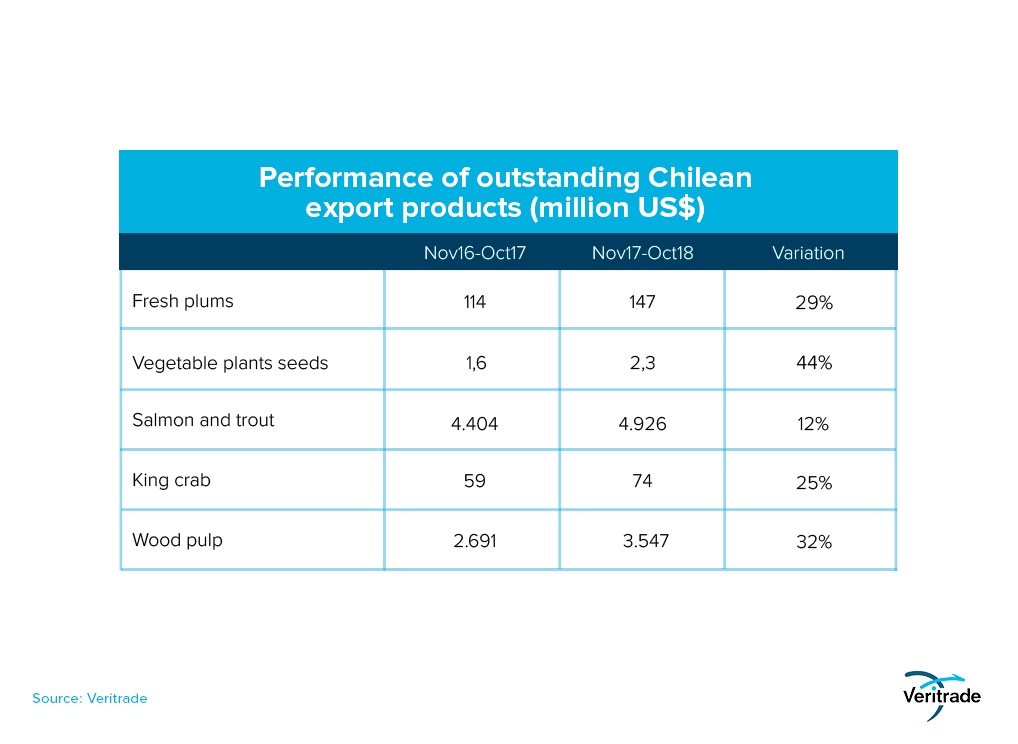
In the case of cherry, an increase in the amount coincided with a rise in value. The weight of the merchandise shipped increased from 98,800 tons to 120,292 tons in the evaluated period, while the average value increased from US $ 1,163 per net kilogram to US $ 1,229 per net kilogram. The transport routes used are maritime (86%), terrestrial (13%) and aerial (1%). It should be noted that the greatest market demand is for large countries or ports that function as a logistics center, as we can see in the following table.
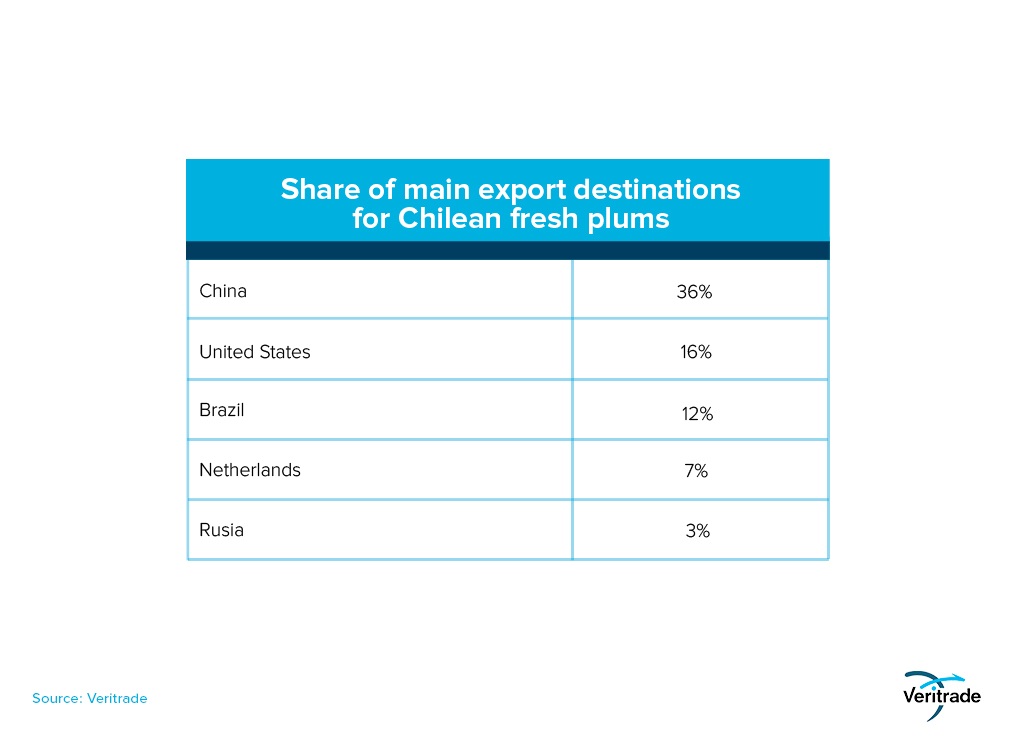
The situation is repeated in the seeds of vegetables. While the weight of the shipped products went up from 39 tn to 47 tn, the unit value went up from US $ 43.289 per net kilogram to US $ 50.379 per net kilogram. In the case of seeds, it should be noted that according to a Prochile report, the South American country is the second world supplier of vegetable seeds for India, after Thailand. The main plants that Chile supplies to the global market are the tomato, the cabbage, the eggplant, the chilli, the okra and the cucumber. The transport routes used are maritime (78%) and air (22%).
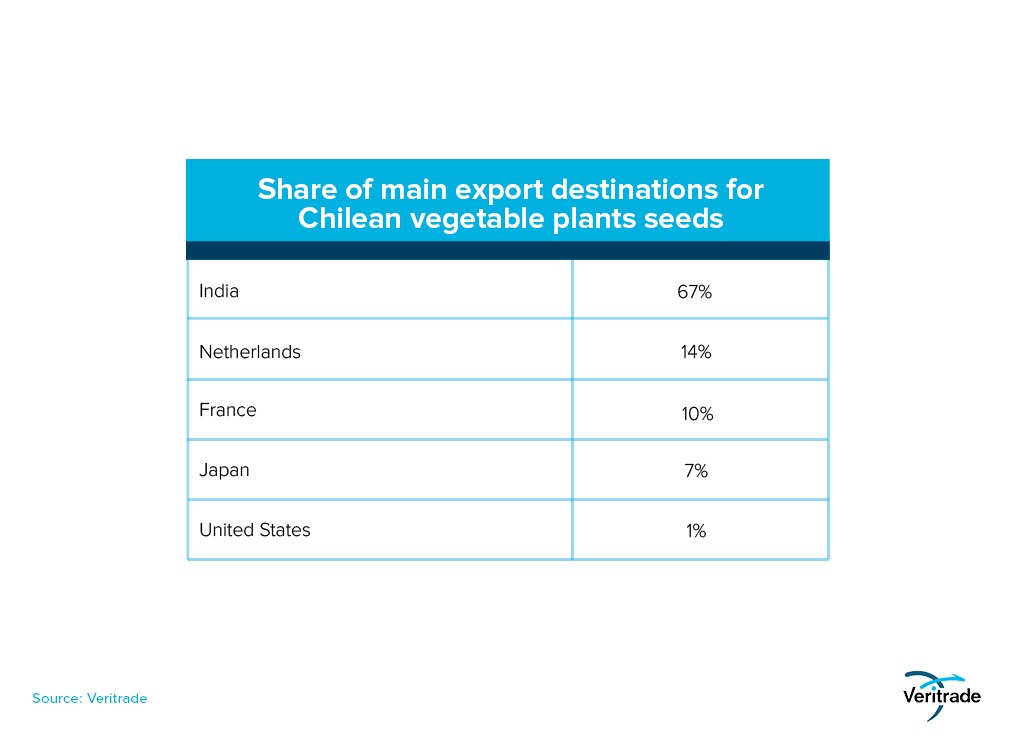
Regarding salmon and trout, the increase in production has resulted in a greater amount of exported product. As a reference, shipments of the Atlantic Salmon and Danube Salmon (the most important) item went up from 95,425 tons to 116,701 tons between the periods November 2016 / October 2017 and November 2017 / October 2018. On the other hand, the participation of the transport routes used is more diverse than in the other cases: 56% moved by sea, 26% by land, and 18% by air. Once again, the size of the markets is determinant in the demand of destinations.
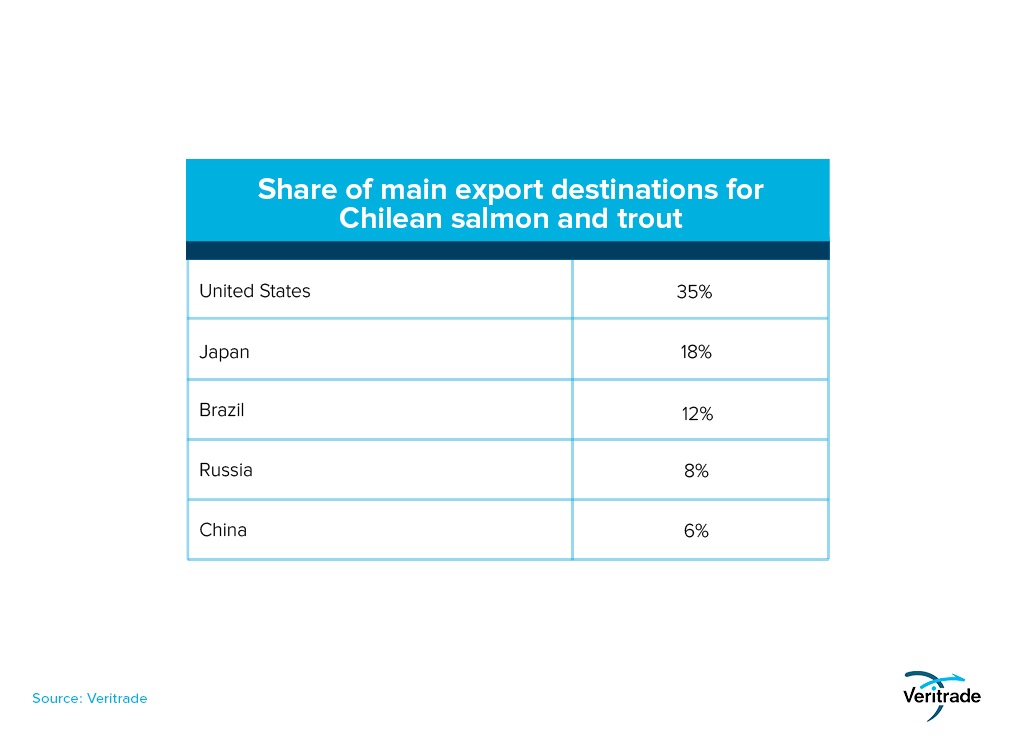
As for the king crab, the Asian market is by far the most important one. The spider crab is a specific product to certain conditions found in the Chilean sea, which gives a solid comparative advantage to the country. It should be noted that, being a frozen product of high duration, almost all shipments are made by sea, and only 0.05% is transported by land to regional destinations such as Brazil and Argentina.
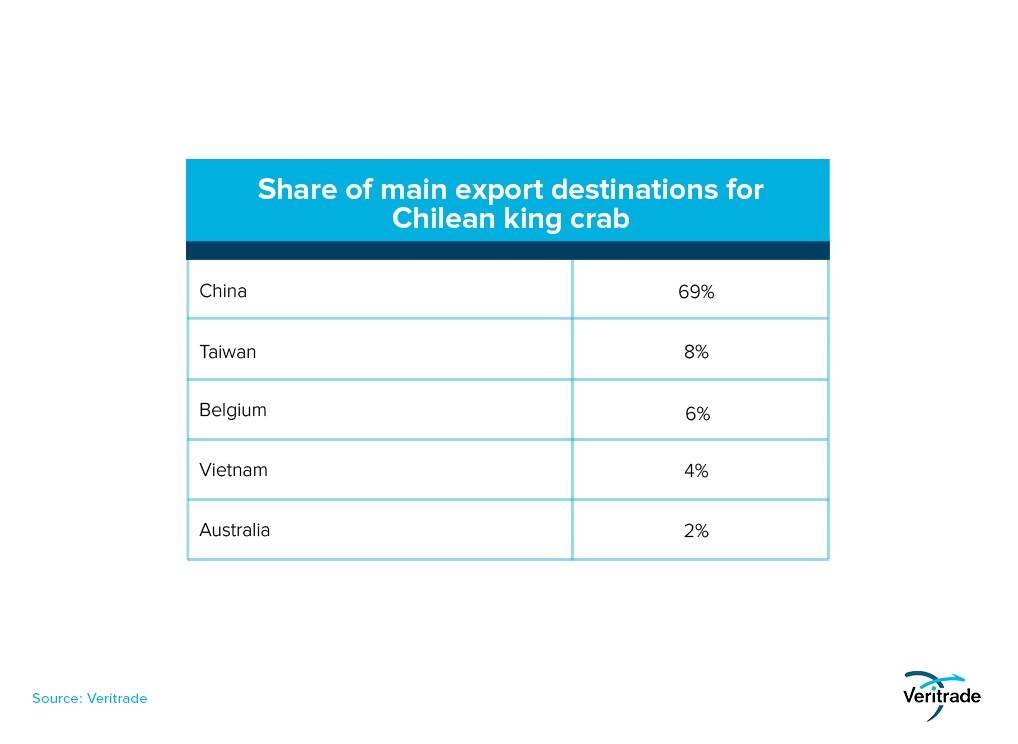
In terms of value, the most prominent increase is that of cellulose. It is expected that 2018 was a record year for this wood derivative, mainly due to the rise in prices, after a 2017 with sustained drops. Being a raw material, China is a related market, like other Asian destinations. This is complemented by the Netherlands, which functions as a point of distribution to the rest of the European continent, in which it competes with the Nordic countries. Almost all the merchandise is transferred by sea, while 0.5% goes by land to regional destinations such as Argentina, Brazil, Uruguay and Bolivia.
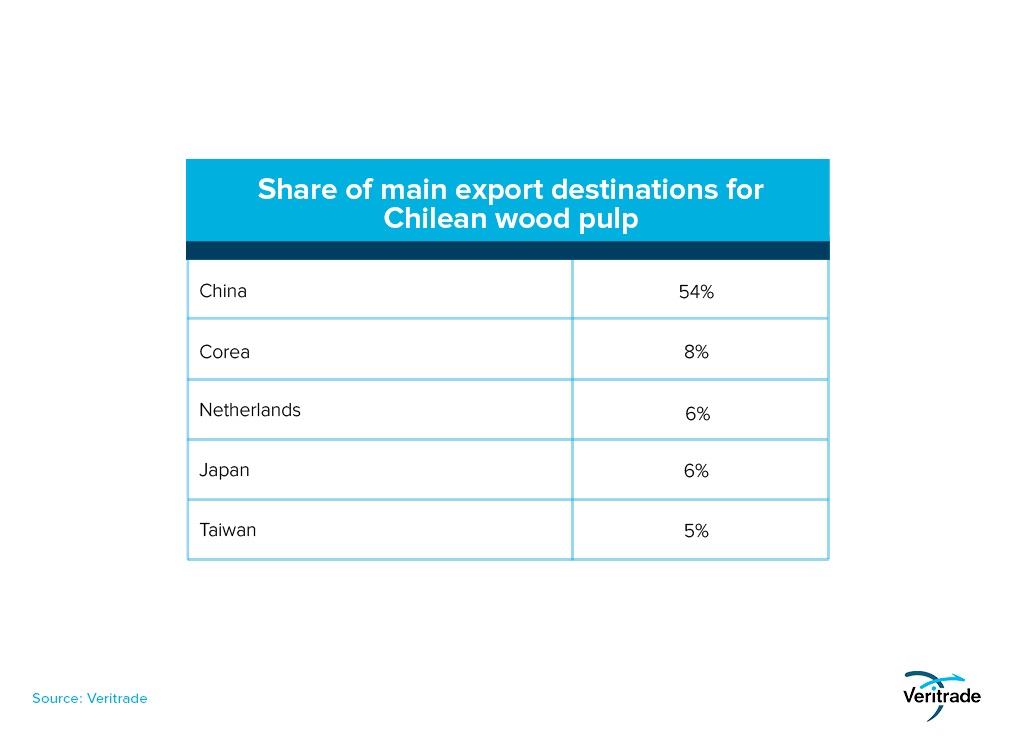
For more information about Chile's exports, visit the Veritrade portal.
Request your free trial at https://bit.ly/2FuAsbx